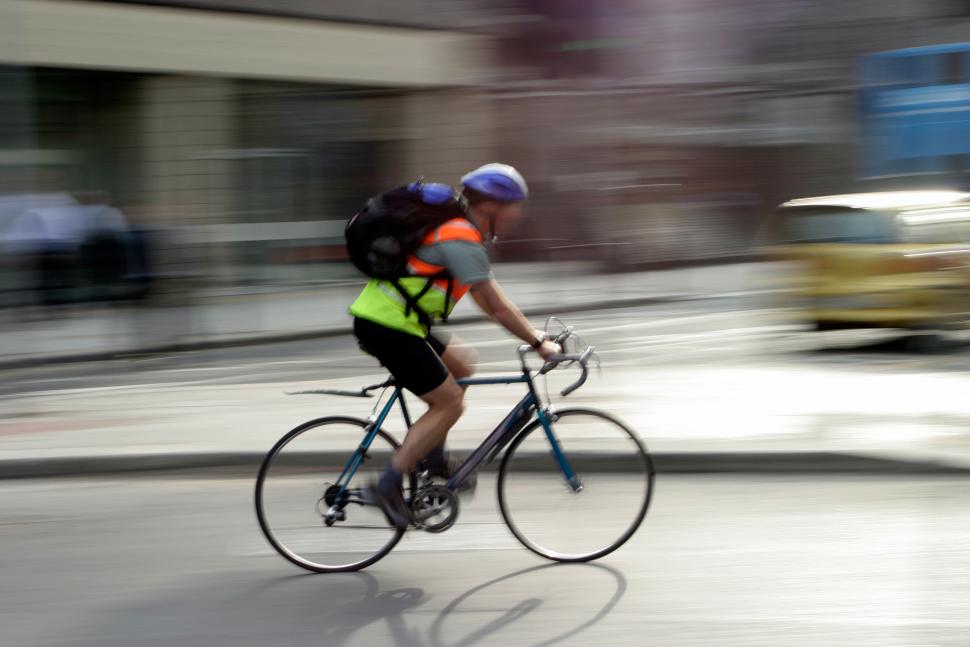- News
- Reviews
- Bikes
- Accessories
- Accessories - misc
- Computer mounts
- Bags
- Bar ends
- Bike bags & cases
- Bottle cages
- Bottles
- Cameras
- Car racks
- Child seats
- Computers
- Glasses
- GPS units
- Helmets
- Lights - front
- Lights - rear
- Lights - sets
- Locks
- Mirrors
- Mudguards
- Racks
- Pumps & CO2 inflators
- Puncture kits
- Reflectives
- Smart watches
- Stands and racks
- Trailers
- Clothing
- Components
- Bar tape & grips
- Bottom brackets
- Brake & gear cables
- Brake & STI levers
- Brake pads & spares
- Brakes
- Cassettes & freewheels
- Chains
- Chainsets & chainrings
- Derailleurs - front
- Derailleurs - rear
- Forks
- Gear levers & shifters
- Groupsets
- Handlebars & extensions
- Headsets
- Hubs
- Inner tubes
- Pedals
- Quick releases & skewers
- Saddles
- Seatposts
- Stems
- Wheels
- Tyres
- Health, fitness and nutrition
- Tools and workshop
- Miscellaneous
- Buyers Guides
- Features
- Forum
- Recommends
- Podcast
 Commuter cyclist
Commuter cyclistDfT figures reveal that cyclists rode further in 2014 – but drivers drove further too
New Department for Transport (DfT) figures reveal that the distance cycled on roads or next to roads in 2014 was 3.8 per cent higher than in 2013. Motor vehicle traffic also rose by 2.4 per cent – the fastest annual growth since 1996.
With 3.25bn miles travelled, UK cyclists covered more distance than either motorcycles or buses (both 2.8bn) and bike traffic has now risen every year since 2008.
However, greater distances have been covered in the past. Estimates began in 1949 with 14.7bn miles and while there was steady decline to an all-time low of 2.3bn miles in 1973, levels rose again to 4bn miles for three successive years in the early Eighties.
Nevertheless, the 2014 figure is the highest since 1991 with the data indicating that the increase from 3.1bn miles in 2013 has largely been down to growth in London, the South-East and the North-East, each of which shows an increase of 100 million miles.
Sustrans Policy Director, Jason Torrance, said the rise demanded greater cycling investment:
"It's heartening to see cycling on the rise yet again in these latest figures. More and more people are taking to bikes to avoid the cost, inconvenience and congestion that comes with running a car. The numbers also make the argument for more of the transport budget to be spent on cycling infrastructure even more compelling. Demand for cycling is swelling every year and Government must do more to help keep them safe and provide convenient routes.
"Our vision is to transform the UK so that everyone can choose to walk and cycle to school and work, for fun and transport. To do this we need a statement from the very top of Government to make walking and cycling a cross-departmental priority. We also need funding for cycling and walking equivalent to five per cent of the transport budget, and a Cycling and Walking Investment Strategy that contains a long-term vision and targets."
However, the DfT figures also reveal a marked rise in other forms of traffic. Motor vehicle traffic peaked at 314.1 billion vehicle miles in 2007 and then fell for three consecutive years – the first consecutive annual falls since traffic records began. Between 2010 and 2013 traffic remained largely stable, but it has again shown strong growth of 2.4 per cent from 2013 and 2014.
The DfT points out that it is not yet clear whether this growth is a fluctuation around a stable figure or a signal of a return to sustained growth, but it does say that this is the fastest annual growth since 1996.
Alex has written for more cricket publications than the rest of the road.cc team combined. Despite the apparent evidence of this picture, he doesn't especially like cake.
Firstly, my heart bleeds for Ms Collins. Google Maps shows Rules restaurant is halfway along Maiden Lane and that it would take a whole minute to...
I'd be 100% in favour of the idea if it could stop people wearing their helmet tipped right back like some sort of Burberry-wearing chav in a...
I desperately need a new tyre but cannot find one anywhere. The tyre says 20inch but the wheel is 22inch. Other tyres just don't fit. Can anyone...
Your setup is a lot tidier than mine, for sure! 😅
Drivers : cyclists should pay Road Tax etc...
A friend of mine created a rear light called tailgator technologies that has an accelorometer in it to get brighter when you are slowing down. My...
when does armed resistance become genocide?
well keep in mind the county council leading and proposing these active travel changes is Tory. so work that one out.
What I don't understand is what is so hard to understand about the fact that higher/steeper stems bring the handlebars closer to you. If you only...